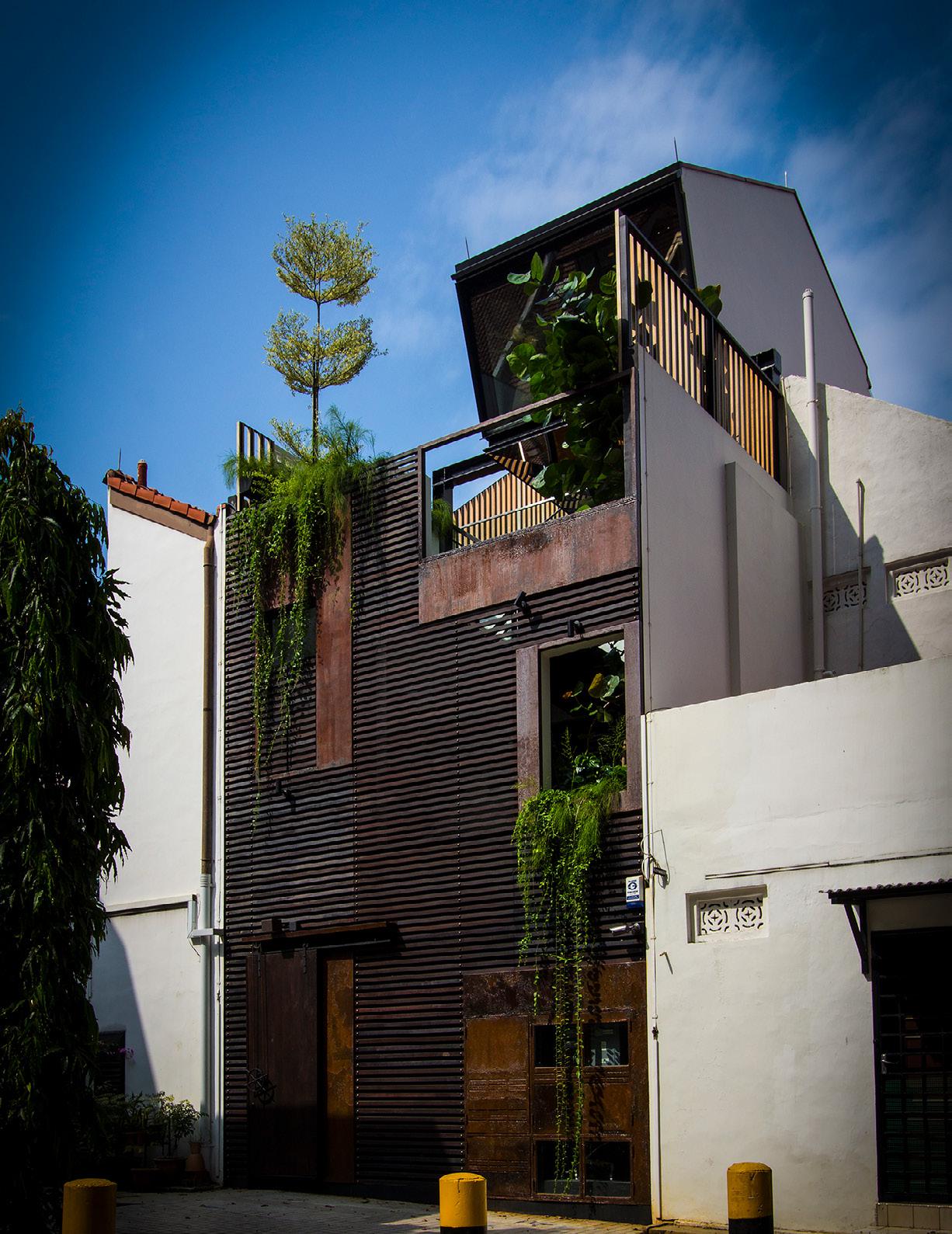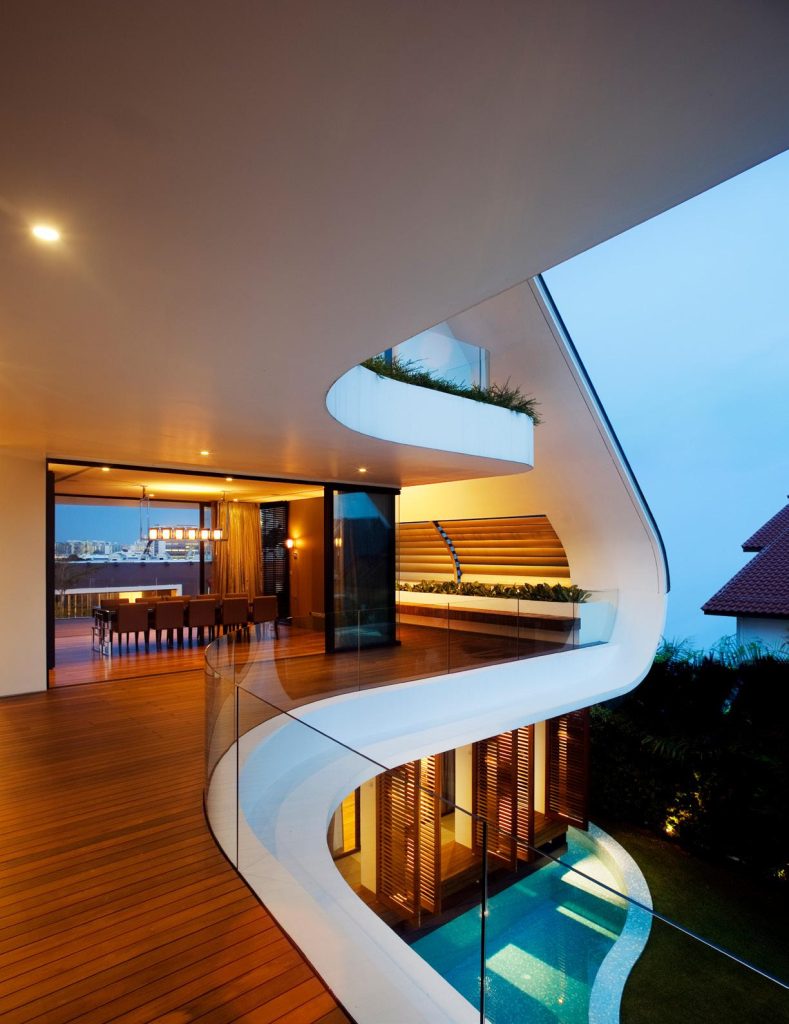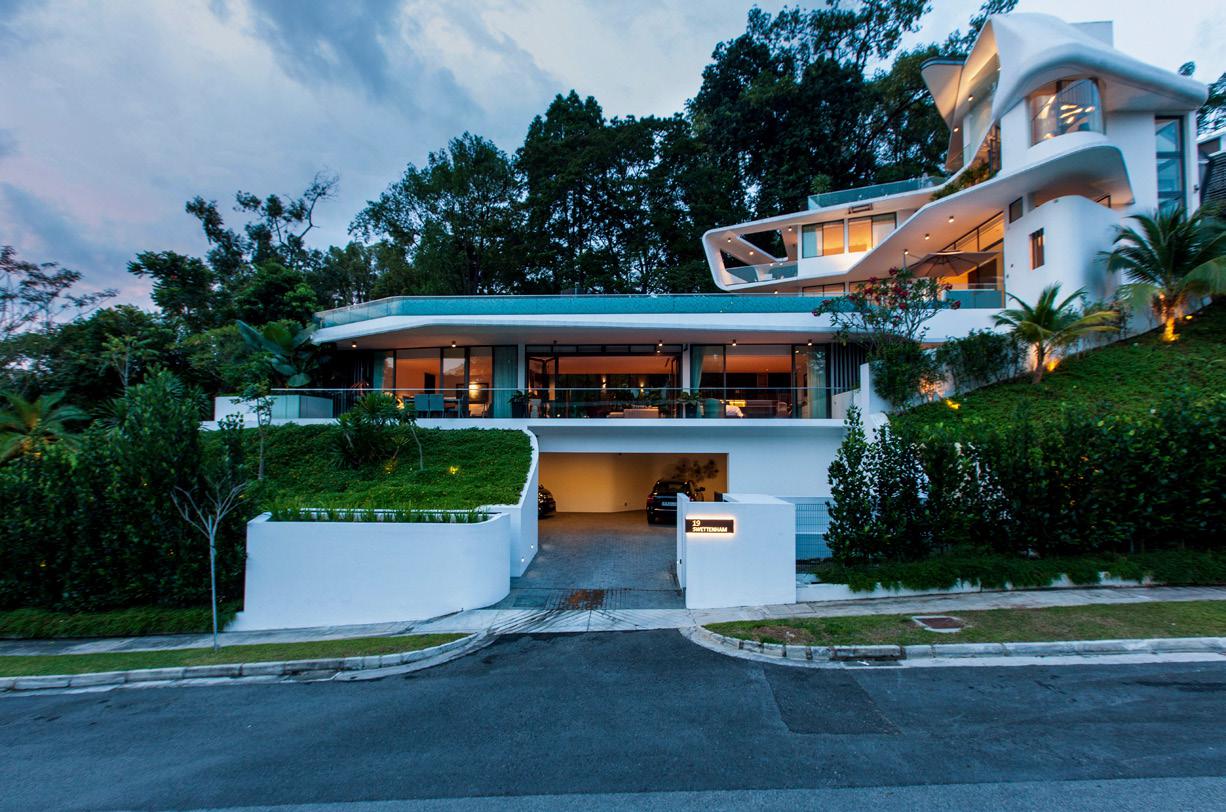September 2020
SwiftNLift - Top 10 Best Architect Companies In 2020
Would you like to share something about Aamer Architects?
Back in 1994, upon returning from studies in London and after several years of practice in reputable firms in the UK and Singapore, I established my own Singapore practice.
Kindly describe Aamer Architects and its vision.
I’d prefer to see myself as an Artist with a soul, operating in an environment dominated by large corporations, more concerned with bottom line profitability, and I saw an opportunity to bring a different approach to Design and Architecture. The fact that space is both physical and psychological, for example, having more outdoor green spaces does not necessarily mean reducing the size for your house (or its value), on the contrary, if designed well, it expands your mental space and perception adding meaningful value to your project.

Tell us in details about the Founder.
Between attending schools and interning with firms, I still managed to indulge in the Arts, whether painting, pottery or roaming through the best 20 museums all over Europe.
Although I’m implicitly aware that a lifelong pursuit of an artist may not always fill the rice bowl, I do remain adamant to relish in the importance of Art in life and the power it has to improve one’s well-being.
This inclusion of Art into the personal psyche became a very important part of my journey as an Architect starting my own practice.
25 years on, I remain responsible for all designs produced by our studio and continue explorations & experimentations, together with my team, with the robust energy of a wandering child’s mind, seeing every new design as an opportunity to rethink and renew insights into the world (of design) and hence always expanding and refreshing our own Mind and Soul.

What are the biggest challenges in the industry? What makes Aamer Architects different from its competition?
Right now the biggest challenge in the industry is to find ways to limit the damage done to the environment. We need to be humble in our pursuit of the finer things in life. We always try to convince clients on the true meaning of good design and veer them away from wasteful consumption.
We wish to redefine the meaning of ‘luxury’ and hold hands with our clients toward a more sustainable future (by design). Promoting an understanding that good design can achieve more while consuming less energy and resources.
That materialistic luxury can be ephemeral and true satisfaction can be achieved with less, if we understand the psychology of comfort and pleasure.
We are always mindful and sensitive to the site and context of the places we operate in. We are conscious of the lack of space in land scarce Singapore and do our best to achieve privacy and a sense of place, in spite of the usually overcrowded situation.
How clients are getting benefited by doing business with Aamer Architects?
We never repeat our designs, so every client is assured that they will receive a tailored, unique design based on their needs and values, and the best possible solutions for the space they inhabit.
We like to think that by going beyond their wishes we are able to enhance their lives, perhaps in ways they did not expect. In that respect, we see ourselves as the professional/expert engaged with the sole purpose of improving Life.
What inspired Aamer Architects to enter the business segment?
If by business, you mean the business of providing ‘Happiness’, then we are in a good business well worth entering. Also, whilst doing this ‘business’ we are providing valuable training and grooming for the new line of future entrepreneurs. Already, we have seen several outcrops of successful design firms that were our staff before, and are now running their own practices while staying in touch, and often, for work collaborations.“The apple never falls far from the tree”.
What are your views on today’s industry scenario?
In this industry, which is very competitive, it is important to understand the need to cooperate and collaborate (as we do with our Shenzhen partner). Institutes like the SIA (Singapore Institute of Architects) are important in the promotion of good design and to mitigate and prevent the industry from cannibalising itself. Guidelines on fair competition practices are essential and improve quality.
How does Aamer Architects work on making the industry better? What can be expected from Aamer Architects in the upcoming years?
Through our work, we try to be an inspiration to the industry.Although small, we do have a sizable influence as a design practice, as can be seen from the multitude of features in journals both local and international, which we see as promoting the value of good design.
We like to think that even a boutique practice like ours is able to take on projects and challenges perhaps even better than the big corporate firms.
Although relatively small, and we wish to remain so, we have and will continue to take on larger and wider range of projects, whilst keeping to our fundamental principles.
We will continue taking part in competitions (where we have a good success rate), testing our mettle and continually pushing the boundaries.

Explain the Aamer Architects – Founder’s journey till date, and how Aamer Architects tackled any initial struggles?
Journey often connotes the idea of careful forecasting with intended results. That is not the case for me at all. This is going to be a long story….I’ll try to summarize.
A little background:
My Dad migrated to Singapore from India in search of a better life. My Mom was born during hard times during the Japanese occupation in WW2. Both of my parents had to work. I was their second son of three boys. My maternal grandma managed the family. In spite of the little we had, my childhood was a happy one with lots of play. From a young age I love drawing and remember grinding flowers to make paint. I was a bright kid with a lively spirit. I believed in fairies and angels (I now believe they had an intervening hand in my development).
Being the middle son, I was neither the strongest nor the sweetest but that didn’t bother me as I was mostly left unnoticed and hence free. Free to indulge in my imaginary world, often of my own creations. I did well in primary school and made it to a top secondary school (Raffles Institution). Still not knowing what I wanted to do in life, I simply did my best at whatever task given to me. Perhaps it was the need to live up to the strength of my elder brother or setting a good example to my younger, that made me rather competitive with an indelible will to succeed. I also had a great sense of adventure and discovery for anything and everything, often without a definite purpose except for the satisfaction of knowing and the curiosity to indulge in all that Life had to offer.
But still with no clear idea of what I wish to do as a vocation in this life.
Until some platoon mates in the army (during my National Service) told me about their intention to pursue Architecture and that I should try it since I was good at drawing. I applied and made it to Architecture school by a slim margin of chance and fell totally in love with Design. I enjoyed the pursuit of ideas and the challenge of making them work. All this within an environment of wild social interactions and often long sleepless nights to meet datelines.
Those junior university days remain the happiest of times.Times when your mind start developing beyond quick copy solutions to finding ecstatic joy in your own original creations.Times when you start understanding the physicality of your existence and the impact on your surroundings.Times when you start having deep feelings even for inanimate objects, like the bond you have with your pen or ruler.
While doing an internship in a large corporate firm in Singapore, and thanks
to my newfound confidence and relentless pursuit of perfection, I managed to garner a sponsorship to pursue higher education in England at one of the best Architecture School, the Architectural Association (AA) of London. It was, needless to say coming from a little country, rather mind-blowing to be exposed to the best of students from all over the world.
Competition was so tough, that at times I wanted to give up. But staying the course, in hindsight, gave me resilience, determination and more survival strength. Qualities that later proofed incredibly useful, especially after losing my first full time professional job due to a moment of angst with my corporate boss.
It was shortly after my return to Singapore and after two years of dull practice in the corporate firm that I decided (again by chance) to start my own practice.
I remember waking up that morning after walking out of my job in a fiery temper, feeling lost and regretful, when suddenly I got a call from my father’s boss (who is more like an Uncle to me). He asked me if I would consider designing his family house. Whether this was by chance or the angels were looking after me,
I could not refuse this opportunity that felt like it was dropped upon me from heaven.
That project, my first independent piece of work was born from the bedroom of my little flat. All technical drawings and details were meticulously hand drawn. I completely immersed myself in the process, often forgetting to eat or sleep. After 3 years it came to a complete delightful fruition and received much attention from leading local design publications. Mostly for its strange, quirky design. It has an upside-down curve roof in cast concrete where rain water is collected and used for the gardens. It has a waterslide that curved around the house and transported you from the upper floor, around the exterior of the house and landing in the swimming pool in the rear garden. Crazy perhaps, but I thought it was a great way to wake up in the morning, from your bedroom to plunging into the pool. No better way to start a fresh day!
The owners liked it so much that till today the waterslide is enjoyed by their grandchildren.
From there, and largely due to the media exposure, job commissions started pouring in and I had to establish a proper office. But always with the determination not to be influence by current trends, to always be innovative, to never repeat or copy my own designs or others.And, most importantly, to enjoy the work, so that this does not feel like a job but a hobby. After all, the practice needed to bring new perspectives to our local Architecture scene, at the time when clean lined modernism was the preferred style.
Like all new practices, there were initial struggles. Like convincing clients to give us a ‘blank canvas’ when it comes to design.That the audacity of our designs can be proven to work.
That our pursuit of beauty and soulful spaces need not compromise the practicalities of engineering and construction.That conscious care will be given to details. That good design has no particular Style and is Timeless.
That Architecture (the mother of all Arts) is far more than just a house or building. Our well-being depends on it.
Architecture by Aamer Architects


